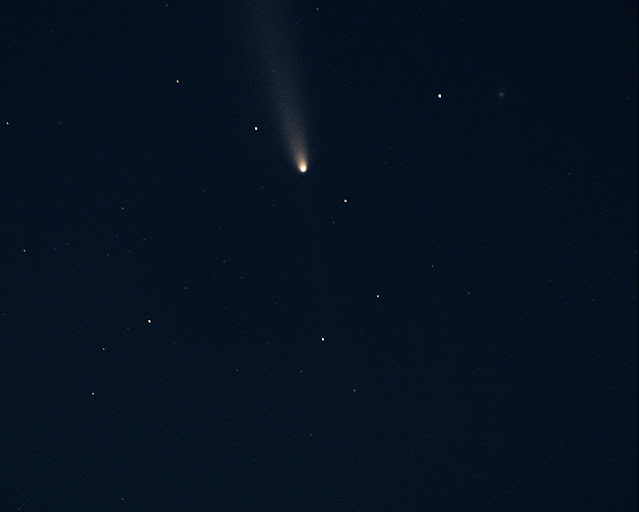Comet Tsuchinshan-ATLAS was one of the brightest comets of the last century. Its high inclination orbit made its apparition at peak brightness relatively short-lived but quickly gave it separation from the Sun, making it relatively easy naked-eye viewing in the evening sky. The ion and gas tail were not very independently resolvable due to the comet's outgoing trajectory being nearly in a co-radial from the sun, but nonetheless the tail as quite long, visually appreciable, and accompanied by an anti-tail.
I took some photographs of Tsuchinshan-ATLAS in Bortle 5 suburban conditions on the evening of October 15. Stellarium estimates the comet was a +1.4 magnitude moving through the constellation Serpens. Observations listed on cobs.si suggested magnitudes in the range of +1 to +2.

The comet in the early twilight sky. 5×2' stack.
Closer shot of the central region. The anti-tail was slightly visible from this suburban location, but didn't come across as clearly in these images. Another comet, 13P/Olbers, is technically in this shot, but as a dim +10 magnitude comet it was not particularly visible. 5×2' stack.
More detail of the sky near the coma. The anti-tail's a bit more prominent here, as is the globular cluster Messier 5, also known as the Rose Cluster, to the right of the coma. 10×2' stack.
Detail of the faint anti-tail region. 10×2' stack.
Heavily stretched/edited 10×2' stack seeking to bring out finer details in the anti-tail. Was also hoping to pull out 13P/Olbers, but it wasn't really evident in any of the photographs I took.
Merger of two separate 10×2' stacks, with one focused on the coma/anti-tail and the other focused on the tail.
That was definitely at least a 12 degree tail. 20×2' stack.






